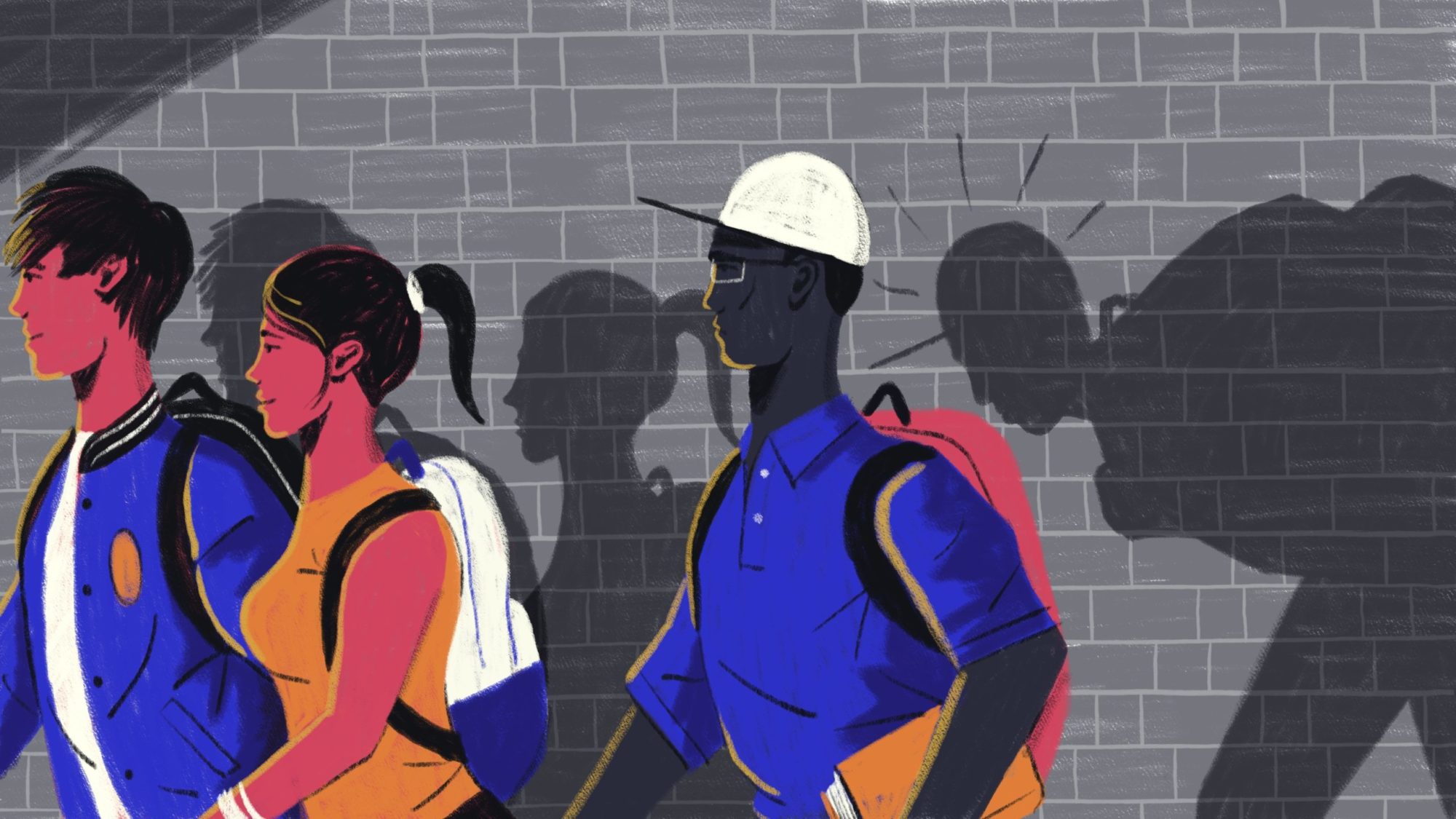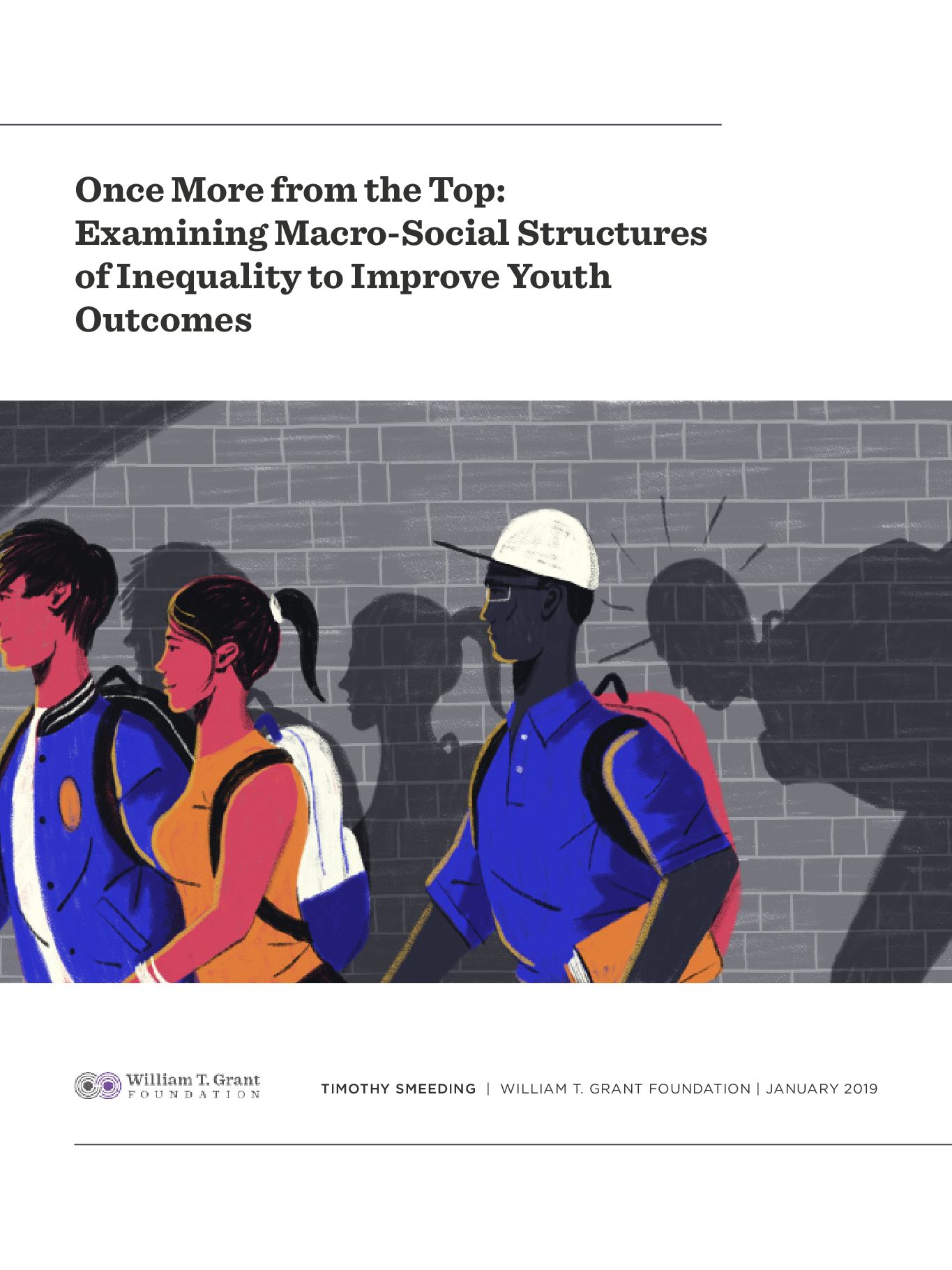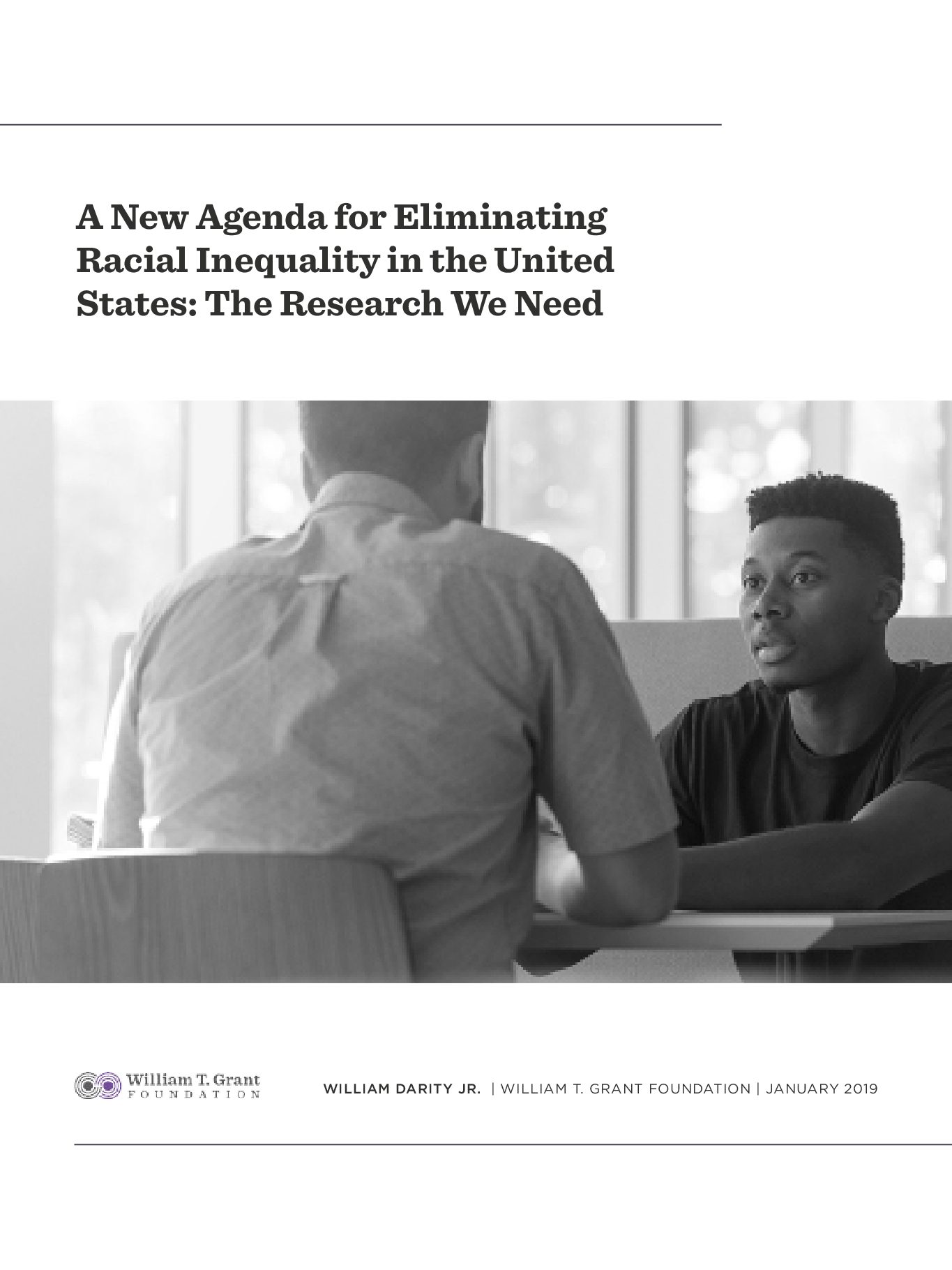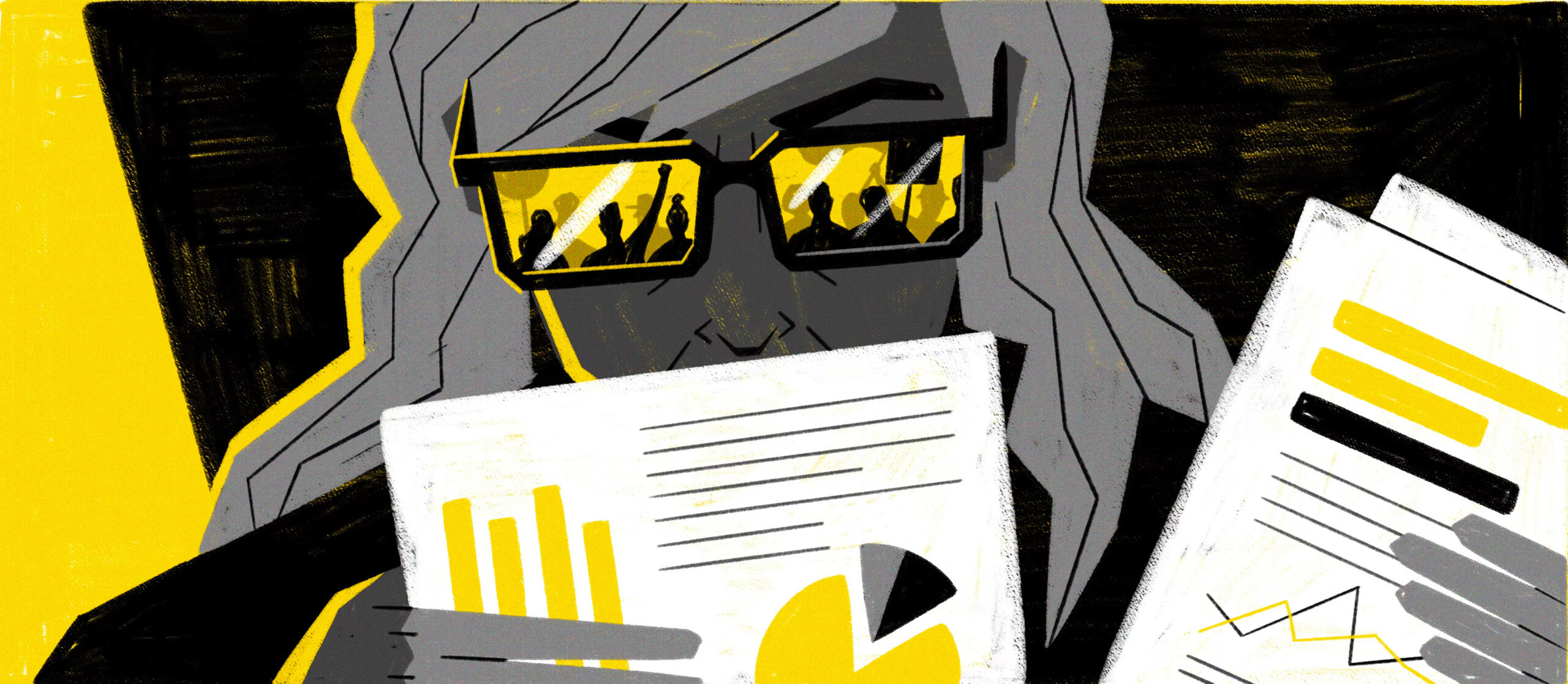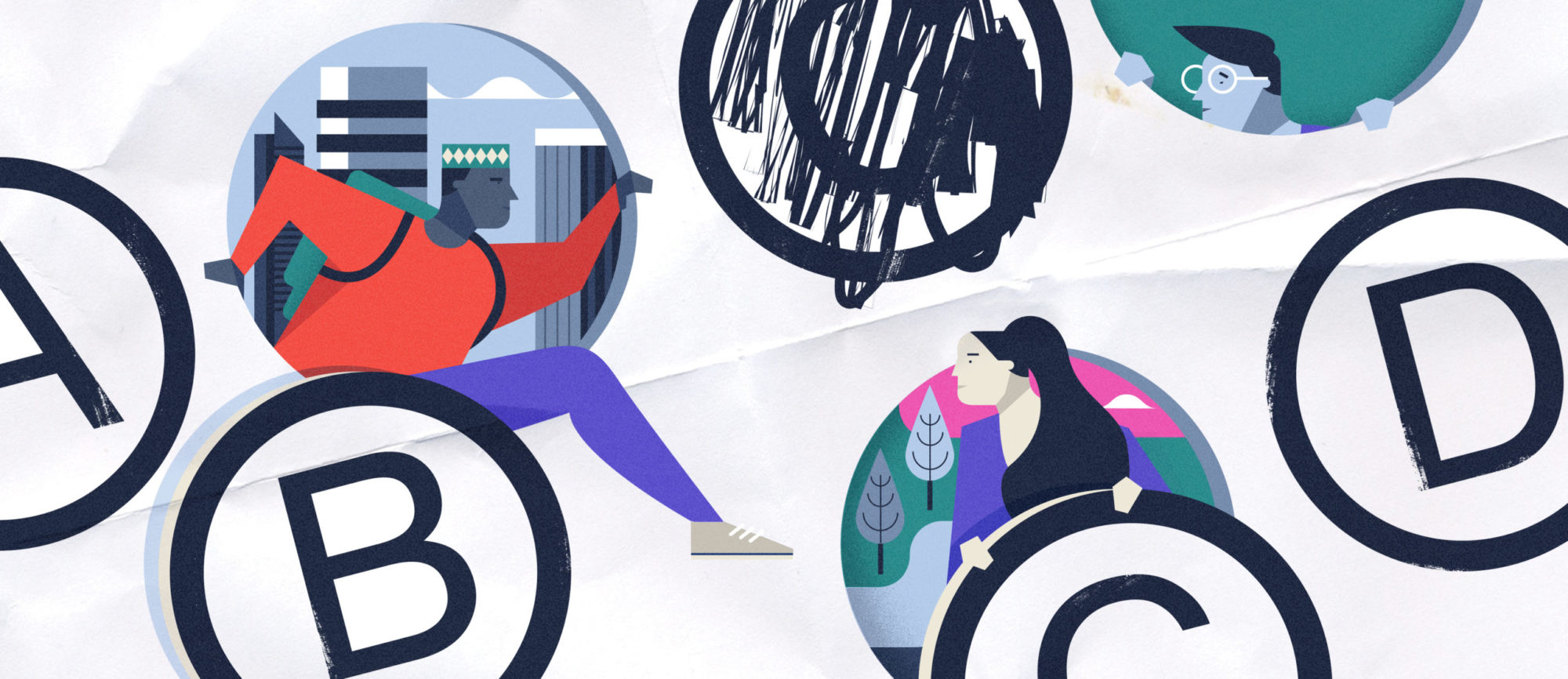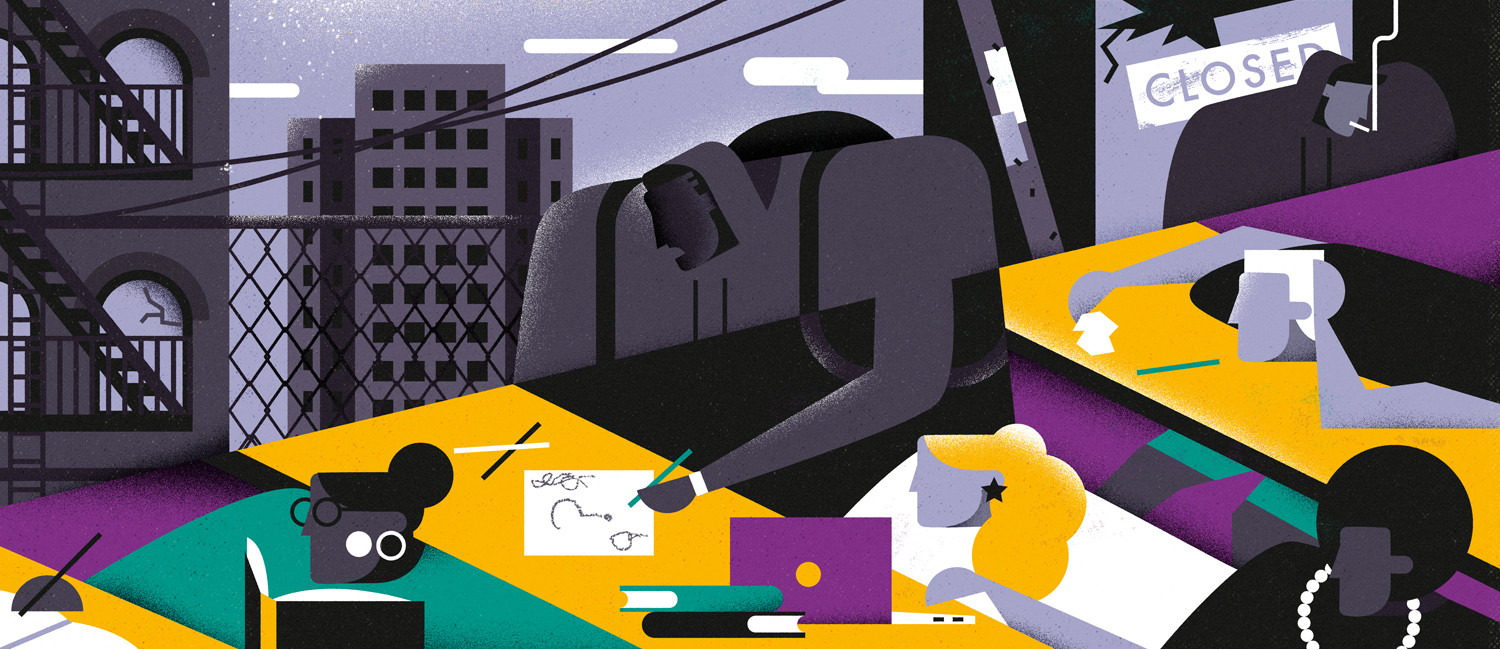Add it up: Taking the long view
In line with its mission to support research to improve the lives of young people in the United States, the William T. Grant Foundation seeks research with the potential to inform policy and practice in the array of systems and institutions where youth learn and grow. While the Foundation advises potential applicants that proposed research projects “should produce findings that have broader relevance” beyond the discrete object of study, the setting and scope of this research is most often micro-social—almost always sub-national, local, or even school system based. In both of the Foundation’s focus areas, funded research typically centers on improving, building, or increasing understanding of a specific intervention, policy, or broader effort enacted by decision makers in states, localities, or districts.
As a Senior Program Associate at the Foundation for the past four years, I have worked closely with both leadership and grantees, and have learned firsthand about the remarkable Foundation-sponsored research taking place across the country. When one looks at the work currently taking shape, let alone the research that has been completed in recent decades, evidence is accumulating and knowledge is growing. My colleagues and I remain confident that the steady, patient building of evidence must be the basis of any effort to strengthen the aforementioned approaches to youth development; as my colleague Vivian Tseng has suggested many times, there is no single “silver bullet” solution to improving young people’s lives.
Although the Foundation is committed to the long view, we may nevertheless encourage ourselves and others to look more broadly at the context in which youth outcomes and opportunities take shape. That is, without expanding our aperture, responses that may disrupt the underlying roots of these circumstances may go unexamined—even if an accumulation of research enables a majority of schools to adopt practices supported by evidence or informs community efforts to shepherd young people to adulthood; and even if municipal leaders use research findings to seek to improve the conditions for juvenile offenders or alter policies that mandate the experiences of young people in foster care. Without research to discover and develop ways to address the macro-social structures that give rise to the challenges facing youth and families, we are only addressing a portion of what’s possible.
Without research to discover and develop ways to address the macro-social structures that give rise to the challenges facing youth and families, we are only addressing a portion of what’s possible.
In this essay I hope to inspire your thinking about how you might aim research toward finding policy solutions that disrupt the larger foundations of inequality in the United States to improve youth outcomes (in terms of upward mobility and the factors which promote it), as well as to find policies to promote the attributes that accompany a stable middle-class life for working-class families and their children.
I aim to address the broader “macro-social” context of inequality in two ways. First, most of this essay speaks from an economist-oriented macro view of social and economic inequality, which is my expertise and my nature. I will discuss the larger conditions that impede the Foundation’s increasingly well-tested and researched micro-interventions, which are now pushing against the macro-social tide. From this perspective, macro institutions matter at the federal and state government level, but they also matter in terms of industry practices and labor market institutions.
Secondly, however, I want to acknowledge an even broader macro-social cultural context that concerns the way we treat people whose color, ethnicity, social class, and worldview differs from our own. One strand of this literature is about treating others with respect, so termed “relational inequality” (Reeves, 2018). Another strand deals with social exclusion and the inequality of “othering” that often blocks opportunity and impedes upward mobility for youth of color (Burton & Welsh, 2016). Ingrained patterns of disrespect, racism, and ethnocentrism are even more difficult to overcome than social and economic inequality, per se.
This essay will not dwell on the cultural issues where change is most difficult in these trying times. But I do not underestimate the effects of the cultural differences, ethnocentrism, and racism which we face. Daniel Patrick Moynihan argued that “the central conservative truth is that it is culture, not politics that determines the success of a society. The central liberal truth is that politics can change a culture and save it from itself” (Weisman, 2010, quoted from Moynihan’s March 2003 memorandum, p. 664). If you substitute the word “policy” for “politics” in Moynihan’s quote, you can understand the dilemma we face by not having strong policy remedies for cultural inequalities. The hope here is that the micro solutions the Foundation works on to reduce racism and ethnocentrism within social institutions like schools, neighborhoods, and the penal system will complement the types of social and economic interventions outlined below to change both the larger socio- economic and cultural foundations of inequality.
Some clues: Considering the economic foundations of macro-social inequalities
In outlining the ways in which researchers might look to build, test, and improve understanding of responses to macro-social bases of inequality in youth outcomes, I do not intend to suggest that this work is or will be easy. My intention is to highlight areas where researchers and funders of research might begin to see avenues for inquiry, and possibly intervention, where previously they may have seen only intractable problems. For potential applicants to the Foundation’s research programs, I aim to illuminate research areas and questions along these avenues. As stated at the outset, the Foundation encourages work that may yield findings with broad relevance; I hope the examples here show that this work need not be limited to the micro-social level. In fact, there are major areas of social and economic intervention that are ripe for examination and research on their effectiveness in reaching the goal of reducing inequality.
In outlining the ways in which researchers might look to build, test, and improve understanding of responses to macro-social bases of inequality in youth outcomes, I do not intend to suggest that this work is or will be easy. My intention is to highlight areas where researchers and funders of research might begin to see avenues for inquiry, and possibly intervention, where previously they may have seen only intractable problems.
Take the wealth gap, for instance. Wealth inequality can be thought of as a macro counterpart of income inequality and consumption inequality (income is what you bring in; consumption is what you spend and enjoy; but wealth is what you have). It should not be a surprise that wealth inequality dwarfs income and consumption inequality, and that wealth inequality is rapidly growing by itself (Kuhn, Schularik, & Steins, 2018). Wealth is calculated, basically, by the value of what you own minus what you owe, and the wealth gap is driven, in part, by variations in values of owned homes (i.e., the major asset of the middle class), and, ever more so, by financial gains from capital, profits, interest, and capital gains (i.e., the major assets of the more well-off).
While the top ends of the income and wealth distributions have more than fully recovered since the Great Recession, when ranking families by wealth, the recovery in the wealth and income distributions are much more muted or actually anemic among lower wealth groups (Kuhn et al., 2018). Patterns of wealth and income change from 1971-2016 mirror each other for the top 10%. While incomes for the other groups, the lowest 50% group and the 50-90% group, have just barely recovered, wealth has not recovered its pre-Great Recession level for either of these groups (Figure 1).
Figure 1. Income and Wealth Growth for Households Ranked by Wealth, 1950-2016


Source: Kuhn, Schularik, & Steins, 2018, Figure 11, p. 29. Note: The authors rank all households by wealth to determine cutoffs for group growth rates. They then index income (top graph) and wealth (bottom graph) levels to 1 in 1971. The hashed vertical line shows the onset of the Great Recession.
The concentration of households in the top 5% of all three distributions together—income, wealth, and consumption—have also grown faster than inequality in any one of these measures from 1989-2016 (Fisher, Johnson, Latner, Smeeding, & Thompson, 2016; Fisher, Johnson, Smeeding, & Thompson, 2018). This means that consumption and income growth have both reinforced wealth growth at the top of the distribution over the last quarter century. Moreover, these differences are systematic and widespread among families with children as well as the more general populace (Gibson-Davis & Percheski, 2018).
Broad opportunities for upward mobility would ideally be encouraged by greater equality in family income, consumption, and wealth. But despite the presence of micro programs and practices to reduce inequality on the ground level and ongoing research to improve and strengthen these everyday responses, the existing economic and public policy infrastructure dampens the power of such efforts because of the greater inequality they bring. In other words, current macro policy, tax policy in particular, is further increasing inequality, even beyond 2016 (Gale, Gelfond, Krupkin, Mazur, & Toder, 2018).
Writers can debate what percentage of those at the top are the real winners: Is it the top 1%, 5%, 10%, or 20% in the income or wealth distributions? It is nevertheless clear in Figure 1 and from other research cited above that it is not those at the bottom or middle who have reaped the benefits of recent economic growth or policy decisions. We are increasingly aware of the ways in which society is separated by social class, race, and the devastating effects of stagnant incomes and wealth disparities on intergenerational mobility (Smeeding, 2016b). Over the past four decades, public policy has largely reinforced these disparities as taxation of high incomes and the wealthy has declined; as tax expenditures increasingly help the rich to finance college and buy better health care and bigger houses in safer neighborhoods with better schools; and as public spending on human services for families and children has fallen (Kierkegaard, 2015; First Focus, 2018).
With wealth so closely related to the long-term accumulation of financial and social capital, home ownership, access to strong and effective schools, and the ability to keep what you bring in and transfer it directly to progeny, systematic social and economic disadvantage is an essential feature, not a short-term distraction of the current economic system. Wealth inequality, and the immobility it engenders, can be aptly described as a product of “policies past and present that have either been purposefully or thoughtlessly designed to widen the economic chasm between White households and households of color and between the wealthy and everyone else.”
In laying out the wealth gap—along with income gaps—as examples of the macro-social structure of inequality, it is clear that the challenge the research community faces is multi-faceted. Of course, a society characterized by a stubborn, increasingly unequal distribution of wealth shapes the systems that exist within it over time and across generations. Programs and policies in that system in realms such as education, social welfare, justice, and housing, then, also shape the outcomes of individuals.
Yet the wealth gap is not a naturally occurring phenomenon; it is the outgrowth of powerful policies put in place by systems working in tandem to deliver specific outcomes. And these patterns are not universal, as national policies and institutions can make a big difference in inequality (World Inequality Lab, 2018). Thinking about structural roots and patterns of changing inequality in this way may shine light on how researchers can begin to study ways to build, test, and improve our understanding of U.S. response to such macro-social problems and to change the patterns of inequality that are evident above. Next, I hope to outline some potential research directions toward these ends.
Take aim: Research to dismantle longstanding structures of inequality
This section lays out a number of examples of policy and research directions which would change macro-social and economic inequalities for the better. I call them either social questions, where the hoped-for policy outcome is mainly to open up life course chances for youth to advance, or economic questions, where the prime outcome is to increase economic well-being among middle and working class families with children. Each of these questions and topical areas discusses policies which have the potential to address some of the different macro inequality problems that we face.
Social Questions
Macro-social questions about improving the life chances of youth have much to do with geography and the quality of social life in the communities in which young people develop. We know that place matters—that neighborhood quality and K–12 school investments vary systematically and in increasingly segregated ways. What we do not know is exactly how place makes a difference in the trajectories of youth. These trajectories are related to income and wealth to be sure, but also to the peers that surround youth in schools and as neighbors, the public spaces they occupy, and the social interactions that shape neighborhoods and lives (Chetty, Hendren, Jones, & Porter, 2018). What are the most important factors and hence the right places to target policy for maximum impact on upward mobility or to reduce gun violence and trauma in bad neighborhoods (Beard et al., 2017)? We have some clues. For instance, recent research suggests that the cost of bringing an educationally disadvantaged youth up to grade level in terms of schooling inputs, given current realities, is extremely high—and much higher than suggested by current spending per pupil in poor schools (Baker, Weber, Srikanth, Kim, & Atzbi, 2018). But how do those costs change if neighborhoods, peers, families, and communities change? To more deeply understand how education can advance mobility, we need research that takes into account potential changes in the social context of education even as it examines shifts in the financing, staffing, and quality of schools.
We also know that social capital matters. But how can society disrupt and intervene with entrenched privilege and power? The disturbing questions asked by Richard Reeves in his book, Dream Hoarders (2017), call out for better policy responses. How do we overcome systematic inequalities that reduce social mobility for some and guarantee it for others without interfering with parental autonomy (Fishkin, 1983)? Are polices that affect zoning or college legacy admissions enough to make a difference? What stronger measures can be employed?
Overcoming economic segregation is an essential step in dismantling the macro-social roots of inequality. How might we grow social institutions that work to revitalize civic life and community engagement within working-class communities? What does the literature say, and what do we still need to know about reviving the middle class and giving hope to families whose social and economic lives are foundering and whose children are likely to be worse off than their parents under current policy regimes (Sawhill, 2018; Chetty, Grusky, Hell, Hendren, Manduca, & Narang, 2017)?
Finally, job destruction has been very uneven during the Great Recession. While this is primarily an economic issue, it also has enormous social implications. Research by Elizabeth Ananat and colleagues finds that heavy job losses in some areas can be best thought of as community-level traumas, accompanied by increasing adolescent mental health concerns and poor educational attainment for all children in a declining area (not just those of parents who lose jobs) (Ananat, Gassman-Pines, Francis, & Gibson-Davis, 2017). These findings call for evaluating re-employment policies, such as those described below, and community development policies to help places and people hard hit by the recession and still not recovering (Hendrickson, Muro, & Galston, 2018; Smeeding, 2016a).
Economic Questions
Just as altering the social context of children’s lives can improve their life chances, increasing the economic circumstances of their families can also improve their chances of mobility. Research in this realm might start by considering the mechanisms and frequencies by which the rich transfer power and privilege to their children. Parental wealth almost always leads to nice homes in good neighborhoods and good schools. In vivos transfers then free the children of the rich from college debt, early post-graduation housing costs, support for unpaid internships, and legal problems, and sometimes even ensure good jobs in family firms. What do we know about the impacts of such infrequent but strategic transfers, and how do we devise public policies that might lessen those advantages (Gornick & Smeeding, 2018)?
How might policy also encourage private institutions to change their own policies and procedures
Given these discussion about social issues, we know that public policy can help redistribute privilege and power in an either upward/worse outcomes (current policy) or a downward/better outcomes (via better social supports) direction. How might policy also encourage private institutions to change their own policies and procedures that can affect the “pre-distribution” of earnings and incomes by encouraging better corporate social responsibility? Can these changes lead to better and more stable employment and better economic outcomes, say, for working class families? For instance, can we affect corporate policies and procedures, especially the treatment of workers in our increasingly monopolized and profitable industrial workplaces and settings? We are just now seeing the shoots of a world in which companies invest in their workers and communities as well as their stockholders (Freeland, 2012). The idea of shared prosperity follows from the ideas of shared governance. Increasingly, highly profitable corporations are pledging to pay at least a living wage; to treat workers as team members (Sawhill, 2018); and to share profits with workers, even moving to models of shared ownership and greater community responsibility (Blasi, Freeman, & Kruse, 2013). From another direction, public schemes for defined pension plans and flexible education funds that help the middle class as well as the rich are popular in Australia, Denmark, and Singapore; why not in the United States (Sawhill, 2018; Agnew, 2013)?
We know that foreign trade benefits all consumers through lower prices and export industries through bigger markets, but ignores the workers whose jobs are displaced by imports (Autor, Dorn, & Hanson, 2013). In a similar vein, automation and robotics lead to better products and lower prices for consumers, and greater profits and higher incomes for those who work in the finance, technology, and electronics sectors, but penalizes those whose jobs are displaced by technology (Judis, 2018). The answer to both scenarios might be a serious attempt to help displaced workers get back on their feet by means of effective career and technology education akin to the active labor market policies (ALMPs) and associated apprenticeships that are popular in northern Europe (Robinson, 2000; Holzer, 2018; Smeeding, 2016a). Research here may lead to better policy efforts to improve the lot of displaced workers.
On a related note, subsidies to raise wages for low income workers like the Earned Income Tax Credit (EITC) for single persons, as well as other forms of wage subsidies and lower taxes on earnings, can encourage work as well as retraining. In what ways do these programs help improve the incomes of working-class Americans? There is some evidence that the single person EITC helps increase income and work among the most disadvantaged youth (Miller, et al., 2018). But other ideas to subsidize wages and build apprenticeships and on-the-job training for displaced workers also need to be tested (see, for instance, Neumark, 2018).
Finally, wealth building for the middle class can also be encouraged by changing tax incentives and practices at zero net public cost. Reeves and Guyot (2018) have suggested exchanging the mortgage interest tax deduction for a $10,000 first-time homeowner tax credit. And, similarly, they propose allowing up to $40,000 in subsidized tertiary educational savings accounts that are not penalized when a child looks for financial aid for college, financed by lowering the federal estate tax exemption to $1 million. While these ideas might eventually be powerful measures and are fiscally sound, the research that demonstrates their gross (subsidy only) and net (including paying for the cost of the subsidy) effects has yet to be accomplished.
Conclusion: Take it from the top
Even when we understand that findings can be generalized, and even if we confront the challenge of increasing scale and replicating micro-social interventions to reduce inequality school-by-school or neighborhood-by-neighborhood, research on reducing inequality in youth outcomes cannot focus solely at the micro/ground level. This work is important and valuable, but it can be complemented by bold work that takes aim at more structural issues. Indeed, macro-social responses to inequality can strengthen the efficacy of micro-social interventions.
To take one recent example, much of the Foundation’s state- and city-specific research on reducing inequalities within prison systems and keeping at-risk youth out of jail through summer youth programs can be immensely aided by federal legislation. The newly signed First Step Act includes several measures that would reduce over-incarceration in the United States, introduces new incentives for rehabilitation of incarcerated individuals and brings about sentencing reforms to lessen the negative effects of youth at risk of incarceration. This cannot but help micro-efforts at reducing incarceration and recidivism.
Talking about the roots of problems can be tricky because it suggests a tinge of essentialism. I do not claim that all problems can be boiled down to a single cause or that fixing wealth inequality will solve the world’s problems. But it will help by itself and it will also make micro interventions more effective. The William T. Grant Foundation aims to help researchers penetrate more deeply the web of factors that shape the lives of young people, and to support research that offers promising solutions for the future. Macro-social changes can help us get there.
